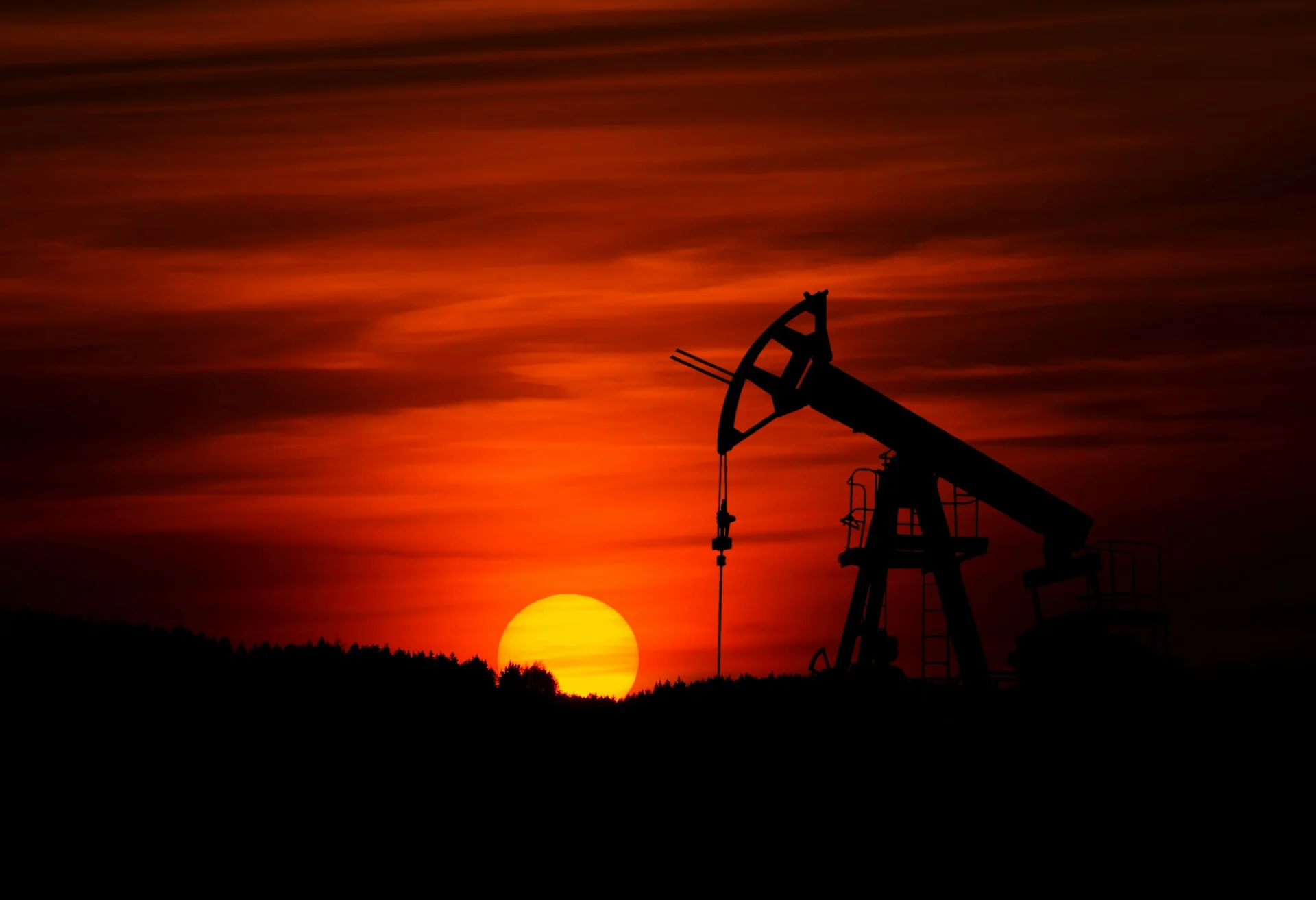Table of content
While this cartoonish stereotype found its roots in how actually oil & gas was appreciated throughout history, by 2024, the market and demand for it look different – first of all, because there’s so much oil human can mine, and secondly, because of other humanity-driven factors.
With growing oil demand and OPEC+ members, including Saudi Arabia, voluntarily reducing their production targets, predicting market conditions in the oil & gas sector becomes more complicated every day, not to mention these factors‘ direct impact on mining.
It’s often up to inventions to change the big picture. From the first steam engine drills to modern offshore rigs, technological advancements have always driven progress. Today’s tipping point of disrupting technology in oil & gas industry is artificial intelligence. In this article, we will cover everything from AI applications in exploration and production to its role in improving safety and efficiency on the mining field, review case studies, and try to summarize what the future holds.
AI Applications in Exploration and Production
Artificial intelligence has changed the way many industries function these days. There are numerous applications of it in marketing, retail, healthcare, logistics, manufactring and myriad of other industries. Mining, of course, is no exception. What does it look like in practice?
Simply put, AI offers unprecedented opportunities for efficiency, safety, and profitability. Whether you’re an engineer, a manager, or a safety officer, understanding AI’s potential can give you a competitive edge.
The oil and gas industry has always relied on data — lots of it. Seismic surveys, geological data, and production statistics are just the tip of the iceberg. Traditionally, analyzing this data has been a time-consuming and complex task. Enter AI, with its ability to process vast amounts of information at lightning speed.
Enhanced Exploration
AI algorithms are now being used to analyze seismic data more accurately, reducing the time and cost of exploration. For example, ExxonMobil has been using AI to interpret seismic data, resulting in more accurate predictions of oil-rich areas. This not only speeds up the exploration process but also reduces risks associated with drilling in unknown territories.
Optimized Production
Once oil and gas are discovered, the next challenge is extraction. AI can optimize production by predicting equipment failures before they happen. Companies like Shell use AI-driven predictive maintenance systems to monitor equipment in real-time. This reduces downtime and maintenance costs, ensuring smooth operations.
Resource Management
Effective resource management is crucial for maximizing profitability. AI can help by providing real-time insights into resource allocation. Machine learning models can predict which wells are most productive and advise on optimal drilling times and locations. Chevron has been leveraging AI to manage its wells, resulting in increased production and reduced operational costs.
Improving Safety and Efficiency with AI Technologies
Safety and efficiency are paramount in the oil and gas industry. With hazardous environments and complex operations, even minor errors can lead to significant consequences. AI technologies are stepping in to make these environments safer and more efficient.
Predictive Analytics for Safety
AI-driven predictive analytics can identify potential safety hazards before they become critical issues. By analyzing historical data and real-time inputs, AI systems can predict equipment failures, gas leaks, and other safety risks. BP has integrated AI into its safety protocols, reducing incidents by 20% over the past year.
Automated Inspections
Traditional inspection methods are often labor-intensive and time-consuming. AI-powered drones and robots can perform inspections in hazardous areas, minimizing human risk. These automated systems can quickly identify issues like pipeline corrosion or structural weaknesses, allowing for timely interventions. Total has successfully deployed AI drones for offshore rig inspections, significantly reducing inspection times.
Efficient Energy Use
Energy efficiency is another area where AI is making a difference. AI algorithms can optimize energy consumption across operations, reducing costs and environmental impact. For instance, Equinor uses AI to optimize its energy usage, resulting in a 15% reduction in energy costs.
Case Studies Real-World Implementation of AI in Oil and Gas
Seeing is believing, and real-world case studies provide compelling evidence of AI’s impact on the oil and gas industry. Let’s look at some notable examples.
ExxonMobil’s AI Journey
ExxonMobil has been at the forefront of AI adoption. The company uses AI to analyze seismic data, optimize drilling operations, and predict equipment failures. In one project, AI algorithms reduced the time needed to interpret seismic data by 75%, leading to faster and more accurate exploration.
Shell’s Predictive Maintenance
Shell has implemented AI-driven predictive maintenance across its operations. By monitoring equipment in real-time, AI systems can predict failures before they occur. This has led to a 20% reduction in maintenance costs and a 15% increase in equipment uptime.
BP’s Safety Protocols
BP has integrated AI into its safety protocols to identify potential hazards. AI systems analyze historical and real-time data to predict issues like equipment failures and gas leaks. This proactive approach has reduced safety incidents by 20%, showcasing AI’s potential for improving workplace safety.
Chevron’s Resource Management
Chevron uses AI to optimize resource management across its wells. Machine learning models predict the most productive wells and advise on optimal drilling times. This has resulted in a 10% increase in production and a significant reduction in operational costs.
How AI Impacts Mining Environmental and Technological Perspective
AI’s influence isn’t limited to oil and gas; it’s also transforming the mining sector. From an environmental and technological standpoint, AI offers several benefits.
Environmental Benefits
Mining operations have a significant environmental impact, from deforestation to water pollution. AI can mitigate these effects by optimizing resource extraction and reducing waste. For example, AI algorithms can predict the most efficient mining routes, minimizing land disruption. Rio Tinto has implemented AI to optimize its mining operations, resulting in a 10% reduction in environmental impact.
Technological Advancements
AI is driving technological advancements in mining equipment and processes. Autonomous vehicles and drones equipped with AI can perform tasks like ore transportation and site inspections more efficiently than human operators. This reduces operational costs and increases productivity. BHP Billiton has adopted AI-driven autonomous vehicles, cutting transportation costs by 15%.
Sustainable Practices
AI can also promote sustainable mining practices. Machine learning models can predict the environmental impact of mining activities and suggest more sustainable alternatives. For instance, AI can recommend techniques that reduce water usage or minimize air pollution. Anglo American uses AI to monitor and improve its sustainability practices, setting new industry standards.
Challenges and Future of AI in the Industry
While AI offers numerous benefits, it’s not without challenges. Understanding these challenges and the future potential of AI in the oil and gas industry is crucial for successful implementation.
Data Quality and Security
AI relies on vast amounts of data for accurate predictions and insights. However, ensuring data quality and security is a significant challenge. Poor data quality can lead to incorrect predictions, while data breaches can compromise sensitive information. Companies must invest in robust data management and cybersecurity measures to mitigate these risks.
Integration with Existing Systems
Integrating AI with existing systems can be complex and costly. Legacy systems may not be compatible with modern AI technologies, requiring significant upgrades or replacements. This can be a barrier for smaller companies with limited budgets. However, phased implementation and pilot projects can help manage costs and ease the transition.
Skills Gap
The adoption of AI requires specialized skills that may not be readily available within the organization. Training existing employees and hiring AI experts can be costly and time-consuming. Companies must prioritize upskilling their workforce and fostering a culture of continuous learning to bridge this skills gap.
The Future of AI in Oil and Gas
Despite these challenges, the future of AI in the oil and gas industry looks promising. Advancements in AI technologies and increased investment in AI research are driving innovation. Companies that successfully integrate AI into their operations will gain a competitive edge, improving efficiency, safety, and profitability.
Emerging AI Trends
Several emerging AI trends are set to shape the future of the oil and gas industry. These include the use of AI for real-time monitoring, predictive analytics for maintenance, and AI-driven automation of complex tasks. Staying ahead of these trends will be crucial for companies looking to leverage AI for competitive advantage.
Collaborative Efforts
Collaboration between industry leaders, technology providers, and research institutions will play a vital role in advancing AI adoption. Joint ventures and partnerships can accelerate innovation and drive the development of industry-specific AI solutions. For example, the Open AI Energy Initiative brings together industry leaders to collaborate on AI research and development.
Regulatory and Ethical Considerations
As AI becomes more prevalent, regulatory and ethical considerations will become increasingly important. Companies must ensure that their AI implementations comply with industry regulations and ethical standards. Transparent and responsible AI practices will be crucial for building trust and maintaining a positive reputation.
Final Word
The petroleum industry is the youngest among the heavy ones, with barely a century on its count. However, it’s also the one that survived most of the rollercoasters that history has walked it through. While, as humans, we can’t influence the will of nature and the amount of natural resources, we can still navigate climate change and market conditions and improve the well-being of every person involved in this sphere. While in the last century, it was up to engineers and manufacturers, in this one, it’s up to scientists and artificial intelligence.
—
References
- ExxonMobil. (2021). AI in Seismic Data Interpretation.
- Shell. (2021). Predictive Maintenance with AI.
- BP. (2021). AI-Driven Safety Protocols.
- Chevron. (2021). AI in Resource Management.
- Rio Tinto. (2021). Environmental Impact Reduction with AI.
- BHP Billiton. (2021). AI-Driven Autonomous Vehicles.
- Anglo American. (2021). Sustainable Mining Practices with AI.












